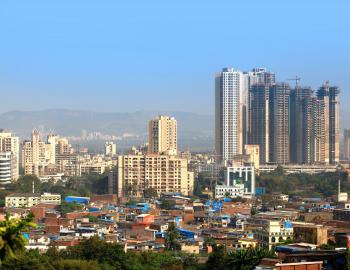POLICY BRIEF: Using climate information for large-scale hydropower planning in sub-Saharan Africa
POLICY BRIEF: Using climate information for large-scale hydropower planning in sub-Saharan Africa
How could Africa’s changing climate affect the performance of large dams, decades from now? And what should policy-makers and investors be doing about it? That's the subject of a new policy brief from the Future Climate for Africa programme and CDKN.
The people of Sub-Saharan Africa need more access to electricity and large-scale hydropower seems as though it could provide some answers, but that’s not the whole story.
The World Bank has asserted that promoting hydropower development would lower the generation costs of electricity, reduce carbon emissions and help to insulate countries in sub-Saharan Africa from increases in the price of fossil fuels. Hydropower makes up just under 20% of the installed generating capacity for electricity in the region. Based on planned schemes, the hydropower generating capacity in Africa could almost quadruple in the coming two or three decades.
On the other hand, hydropower is the energy source that is most likely to be affected by climate change and climate variability because the amount of electricity generated is directly related to rainfall, run-off and river flows.
A new policy brief by Darren Lumbruso and George Woolhouse of HR Wallingford for FCFA and CDKN explores the implications of climate change for large-scale hydropower development.
The authors explain that the impacts of climate change on hydrological cycles are complex and poorly understood in most low-income countries.
However, it pays to take medium- to long-term climate impacts into account when planning large dams because it is very challenging to alter the infrastructure once it is already built. It makes far more sense to foresee and plan for climate-related risks at the planning stage.
Key messages include:
- River flows are an important factor affecting the economic feasibility of large hydropower schemes
- Most large dams are planned on the basis of hydrological data from the past 30–50 years and do not take into account the future changes in rainfall and river flow that will result from climate change.
- The range of potential climate change impacts on rainfall and river flows should be carried out within the context of basin-scale water resources management planning. Where a new hydropower scheme is assessed to be the best choice, policy-makers and planners should place more emphasis on investing in hydropower schemes that maximise flexibility and that embrace adaptive management.
Future Climate for Africa (FCFA), is a new five-year international research programme that aims to advance scientific knowledge about the future of Africa’s climate in the next generation – and how climate science could be better used by decision-makers.
FCFA is jointly funded by the UK’s Department for International Development (DFID) and the Natural Environment Research Council (NERC). CDKN is responsible for coordinating the FCFA scoping phase – an 18 month exercise uses six case studies in sub-Saharan Africa to evaluate the needs of science users in the context of the capabilities and limitations of current science. This brief is the sixth in the series.
Read the other FCFA case studies:
- Using climate information to achieve long-term development objectives in coastal Ghana and Mozambique
- Using climate information to achieve long-term development objectives in Zambia
- Using climate information to achieve long-term development objectives in Rwanda
- Using climate information to achieve long-term development objectives in Malawi
- Using climate information to achieve long-term development objectives for African ports
More information is available at http://www.futureclimateafrica.org



